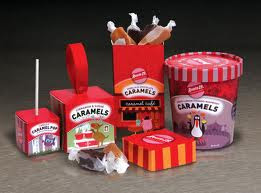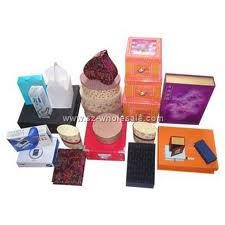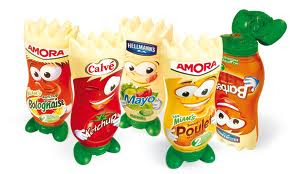Moving into your new home is an exciting time, but most of us dread the idea of packing and unpacking all of our belongings. It can be a daunting task, and no one looks forward to the work involved with a big move. Valuable items get lost or broken, and our sense of organization all but disappears during a move. These packing tips can make the transition on moving day go smoothly and almost stress-free.
1. Start early!
You might want to hold a yard sale to help clear out unwanted or unneeded items. Thrift stores and consignment shops will gladly accept your unwanted clothes. The fewer items you have to move, the easier your move will be. In addition, you may raise some money while getting rid of things! Prepare for packing by getting the necessary supplies:
Strong, corrugated cardboard boxes
Box labels or stickers
Foam peanuts or "popcorn" and bubble wrap
Tissue paper or newsprint for wrapping delicate items
Packing tape to seal boxes
Markers
Scissors and/or Exacto knife
When packing boxes, keep their weight between 25-35 pounds. Pack heavier items in smaller boxes and lighter items in larger boxes. Pack items from the same room together. Seal the box with packing tape, and clearly label it, indicating the general category of contents and which room the box's items come from. (Color coordinating box labels will make unloading easier, too!) First, pack possessions you rarely use, like items from the garage or storage areas. Once you clear out the garage, you will have space to store the boxes until moving day. You can also save time and space by ordering a "pod" or "pack rat," a portable storage container. Pack a few cartons each day, so your workload doesn't seem overwhelming.
2. Pack dishes and other fragile items
When packing fragile items, it is important to keep them safe and secure from breakage. Select a medium-sized box and line the bottom with crumpled packing paper. Carefully wrap each item individually, and place in the carton. When packing glasses and stemware, fill them with crumpled packing paper. Place items in an upright position. Separate layers of items with packing paper or bubble wrap, and be sure to fill in any empty space to prevent shifting of items. Mark the box "FRAGILE," and always stack at the top.
3. Pack small appliances and electronics
When possible, you should pack small appliances and electronics in their original packaging. These items fit efficiently in their original boxes, and are often awkward to fit into other types of cartons. If you do not have the original packaging, choose an appropriate-sized box, and place protective padding on the bottom of the carton. Wrap an old blanket or protective pad around the item, and place it in its carton. Wrap cords separately, label to identify usage, and place in a plastic bag away from delicate surfaces. Non-detachable cords should also be wrapped. Place cords between the padded item and the box.
4. Pack Mirrors, Paintings and Pictures
Wrap small mirrors, pictures, paintings, and frames, and place on edge in cartons. For added safety, place tape diagonally across mirror to protect better against damage. Do not place newspaper directly against paintings, because ink will transfer from the newsprint to your artwork.
5. Pack clothes
Use wardrobe boxes to pack clothes on hangers. You can keep clothes smelling fresh by placing a scented dryer sheet in the box with the clothes. Keep folded clothes in dresser drawers, and take the drawers out before you move the dresser into the moving truck or pod. Once the dresser is loaded, replace the drawers during the actual move. Be sure the drawers are not overloaded, as this can cause damage to the dresser during the move. When you unload into your new Arizona home, remove the drawers first.
6. Disassemble beds
Near the date of your move, disassemble beds to prepare for transport. Take the mattresses off the frame and disassemble, being sure to keep all nuts, bolts, and other hardware in a sealed plastic bag. Label the bag and place in a box labeled appropriately. Secure bed rails with tape or twine.
7. Pack food items
When packing canned goods, place upright with no more than 24-30 cans per box. Wrap glass containers and boxed foods individually and pack in small cartons. Try to consume all perishable and frozen food items before your move, as these items are difficult to move to a new Arizona home safely. If packing medicines, seal caps with masking tape. Wrap and pack upright in small cartons. If needed during travel, carry medicines with you.
8. Pack a survival kit
During your move, you may be unable to find some important everyday items that you will need the first few days in your new home. Pack a "survival" kit to carry in your car or have first off the truck. Some important, often overlooked items to place in the survival kit include the following:
Basic Tools -- Hammer, screwdriver, knife, tape, etc.
Bathroom products -- Soap, shampoo, toilet paper, towels, etc.
Kitchen items -- Disposable utensils, cups, plates and snacks, drinks, paper towels, etc.
Cleaning products -- Cleansers, broom, dustpan, sponges, etc.
First aid supplies -- Bandages, disinfectants, pain relievers, etc.
9. Stay organized
When loading moving cartons into your pod or moving truck, it is important to stay organized and load efficiently. This will ease the unloading process and keep your items more secure from damage. Keep boxes from the same room together to help the unloading process. Stack heavier boxes near the bottom, and lighter boxes near the top. Always stack fragile items at the top.
10. Ask friends for help
Your friends can be a helpful and inexpensive resource to utilize during your move. Ask for their assistance, and let them know your move date well in advance. Offer to reward them during and after the move, as this will encourage their enthusiasm to assist with the move.
11. Unloading
Once you arrive in your new Arizona home, the unloading process begins. When removing boxes from the moving truck or pod, take them to the proper rooms where they belong. Stack boxes neatly and allow ample space for moving furniture into the room.
12. Unpacking
If possible, take off an extra day or two from work. Having a couple of days to unpack will make the job less overwhelming, and you will return to work a little more refreshed than if you were rushed to unpack. Unpack larger items first, and assemble items you had taken apart for the move. Focus on one room at a time, starting where you feel most comfortable.


































